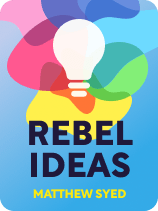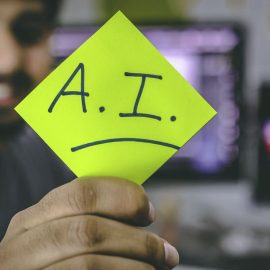

This article is an excerpt from the Shortform book guide to "Rebel Ideas" by Matthew Syed. Shortform has the world's best summaries and analyses of books you should be reading.
Like this article? Sign up for a free trial here.
What are the disadvantages of standardization? What are some examples of the negative effects of standardization?
According to Matthew Syed, the disadvantages of standardization are best understood in the context of homogeneity versus diversity. In Rebel Ideas, he argues that standardization forces us to conform to an average while diversity fosters collective intelligence.
Read on to learn about the disadvantages of standardization, according to two examples from Syed.
Disadvantages of Standardization
In the book Rebel Ideas, Matthew Syed discusses the dangers of homogeneity in the context of standardization—the practice of designing systems to fit “average” individuals rather than tailoring systems to individual differences. Syed argues that standardization forces us to conform to uniform molds, creating systems that are less effective. Although Syed considers various disadvantages of standardization, in this article, we’ll examine two examples: airplane cockpits and dieting.
(Shortform note: Standardization is also prevalent in the U.S. education system, with the Common Core State Standards outlining specific learning goals for students at each grade level. Although 46 states initially adopted Common Core in 2011, it came under criticism from experts who argued that it set unreasonable expectations for students in lower socioeconomic areas, who face unique challenges. So, Syed’s general criticism of standardization resonates with respect to Common Core: It doesn’t acknowledge the diverse needs of students.)
#1: Standardization in Airplane Cockpits
To explain the disadvantages of standardization, Syed offers an example of airplane cockpits. He explains that around 1950, the U.S. Air Force experienced an unusually high rate of safety incidents. At the time, cockpits were standardized according to the dimensions of the average pilot, which determined chair height, separation between pedals, and so on.
Lieutenant Gilbert Daniels, however, realized that few pilots conformed to this “average” cockpit, because they aren’t average across every dimension. To demonstrate, Daniels measured pilots across 10 dimensions to see how many are within the average range for all dimensions. Out of more than 4,000 pilots, zero fell within the average for all 10 dimensions. So, cockpits didn’t fit any individual pilot perfectly.
After engineers redesigned the cockpit so pilots could make individual adjustments, the incident rate dropped significantly. In turn, Syed concludes that adjusting for diversity among pilots optimized the cockpit design.
(Shortform note: In The End of Average, Todd Rose argues that Daniels’s revelation about the disadvantages of standardization in cockpit design suggests a broader conclusion—any system design around the “average individual” is bound to fail. Consequently, Rose claims that the notion of “average” in various domains, such as school grades and employee performance reviews, is counterproductive at best, and harmful at worst.)
#2: Standardization in Dietary Science
To illustrate another disadvantage of standardization, Syed tells the story of Eren Segal, a scientist puzzled by advice on dieting. Upon reviewing the science, Segal found contradictory results; some studies, for example, claimed high-carb diets were optimal, while others endorsed low-carb diets.
Segal, however, realized a possible explanation for this disparity: Diet science focused on average responses to diets, rather than more personalized metrics. Consequently, diet studies didn’t consider the possibility that different diets are optimal for different individuals.
(Shortform note: According to experts, another reason for the abundance of conflicting diet advice stems from the source of diet studies. In particular, experts caution that many diet studies are funded by the food industry itself. Consequently, many researchers try to deliver results that benefit the industry that funds them, which encourages misleading conclusions.)
To test this possibility, Segal designed a study in which one group ate white bread for a week, and one ate sourdough, after which they switched diets. The results showed that, on average, there was no difference in blood sugar levels whether participants ate white or sourdough bread. The individual results, however, revealed the opposite: Some participants had healthier blood sugar levels after consuming white bread, and others had healthier blood sugar levels after consuming sourdough. Relying on average data obscured this result.
Later studies, according to Syed, confirmed Segal’s suspicion: Individuals often respond poorly to standardized diets, because standardized diets don’t recognize that dieting results differ significantly by individual.
(Shortform note: In The Personalized Diet, Segal and co-author Eran Elinav outline their further research on the value of diets tailored to individuals and the disadvantages of standardization in dietary advice. They also explain how people can test their own blood sugar responses to different foods, and create a diet best suited to their needs.)

———End of Preview———
Like what you just read? Read the rest of the world's best book summary and analysis of Matthew Syed's "Rebel Ideas" at Shortform.
Here's what you'll find in our full Rebel Ideas summary:
- Why diverse groups are more collectively intelligent than homogeneous ones
- Actionable advice for creating cognitively diverse groups
- Why systems shouldn't be designed to fit the "average" person






